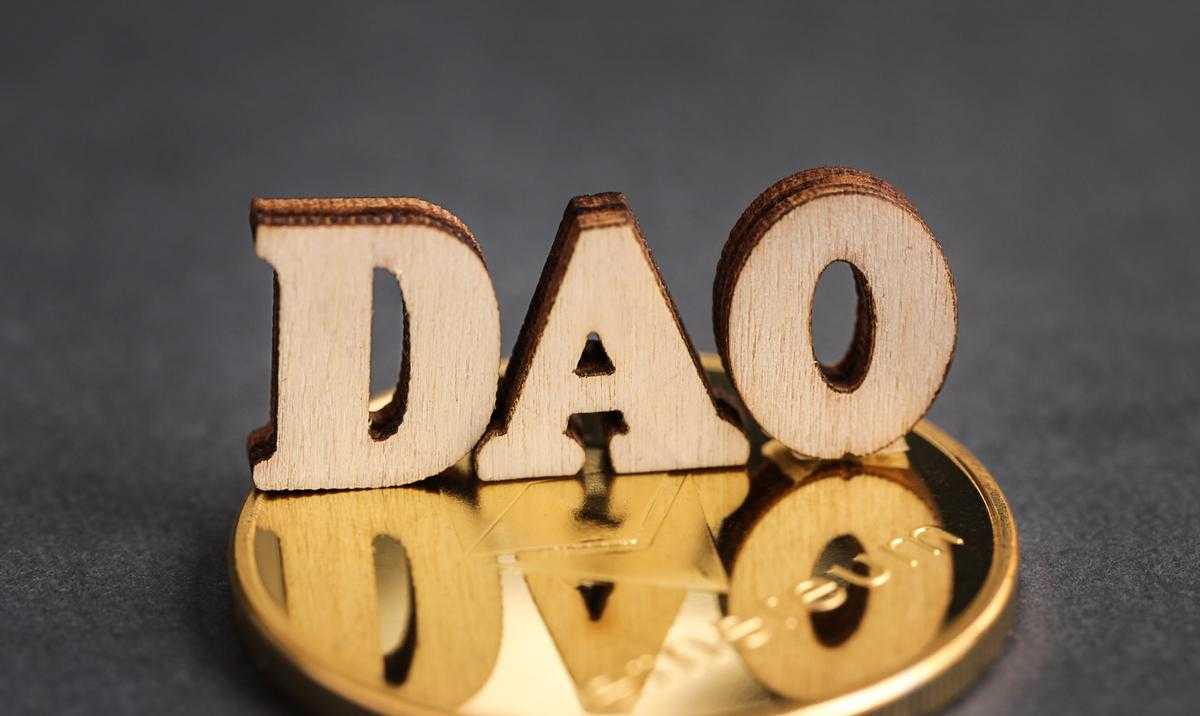DAO or Decentralized Autonomous Organization is always a topic to mention in the world of Web 3.0. DAO is a type of open-source blockchain protocol operating without intermediaries.
This article will talk about everything about DAO including DAO’s definition, how it works, and how safe it is including its advantages and disadvantages.
What is DAO?
The DAO concept was first proposed by BitShares founders Steemit and EOS (Block.one) and Larmier in 2015 and further refined by Ethereum’s Vitalik Buterin in 2016.
DAO itself can help keep a network safe and optimal, without the need for manual intermediaries by its members. The initial idea for creating a DAO was to establish a fully functioning organization without the frills of the executive order that usually exists in an organization.
DAOs differ from traditional organizations that boards, committees, and executives manage. In contrast, a DAO uses a set of rules written in digital code and enforced by a network of computers running shared software. DAO is an organization that is managed by computer algorithms, so it is not controlled directly by humans.
To become a member of DAO, the first thing to do is users must join by providing their cryptocurrency. By owning a DAO crypto asset, users automatically get the power to vote in proposals and updates.
How Decentralized Autonomous Organization (DAO) Works?
After knowing what DAO (Decentralized Autonomous Organization) is, we will get to know how DAO works. Previously, several things needed to be done for the Decentralized Autonomous Organization to work optimally.
The first thing is to program existing rules and then turn them into smart contracts. Smart contracts are computer programs that can work alone on top of the Ethereum system.
At the same time, the rule still requires a third party, in this case, a human, to verify all activities and perform several tasks that he cannot do alone.
After the rules are set, the DAO then enters the funding stage. This funding stage includes two important things, such as:
- The DAO must have a token. The organization uses this token as a “loan” to the debtor.
- DAO needs to ensure user voting rights. By investing in DAO, users will get voting rights that users can use to validate or reject all financing for projects that the organization will finance in the future.
When the funding phase is complete, and the DAO can be run, the DAO automatically becomes autonomous and independent from the maker. Later, all financial rules and transactions will be recorded in detail in the blockchain. That way, the transaction records in the DAO are completely transparent and cannot be corrupted or even deleted.
If the DAO is officially operational, all decisions related to the use of funds are made through a mutual agreement. Later each shareholder can make a proposal containing plans for the organization.
However, to prevent a flood of proposals from coming in, each shareholder needs to deposit a certain amount of money. Only the proposals that get the most approval from the shareholders will be used by the DAO going forward.
DAO and Security
The rules that have been put in place to govern DAOs can be very complex and challenging to change. Why is it hard to change? Because every change will be the responsibility of the new code writer and network approval based on consensus.
The downside, the inability to react quickly to code bugs makes DAOs very vulnerable to attacks by hackers who can exploit vulnerabilities and security and manage crypto funds. In addition, there are also concerns about whether or not DAO can be run in the real world. That is the possibility of converting Ethereum tokens into fiat currency.
DAO and DeFi
Much of the crypto community’s knowledge of DAOs before the end of 2019 probably ended with hacking DAOs and decentralized collateral financing platforms. However, the explosion of decentralized finance (DeFi) protocols has led to an increase in the popularity of DAOs in 2020.
How is DAO different from traditional organizations?
Here are the differences between DAO and traditional organizations.
Organization establishment
Traditional organization establishment usually starts when entrepreneurs see the opportunities in the market. There are several steps to start a company, for example, the company’s information paperwork, fee payment, company’s insurance, bank account, and permit applications.
Less steps are required to start up DAO as it is funded by a small group of people who aim to implement new services or protocols. The project application form is not necessary. Besides, the organization’s planning step is much less formal compared to the traditional ones. Furthermore, DAO processes under the smart contract blockchains.
Organization structure
Most companies tend to set their structure to focus on keeping employees working in the same direction. All decision-making power is held by the highest-level management based on a hierarchical manner. Therefore, every employee is assigned clear tasks and responsibilities.
On the other hand, DAO doesn’t have a hierarchy of organizational structure. Each member interacts under the encrypted network or smart contract which are used to cast votes and create the Trustless system.
Fundraising
The traditional organizations raise their funds from the founding members and partners. The supporting funds will be contributed from a proportion of the business owners. Moreover, traditional organizations usually borrow their funds from investors if they are in need of capital in which the new investors can earn more from the business owner’s shares.
Meanwhile, DAO offers more equally beneficial fundraising. DAO’s investors gain benefits from entering the network as most projects generate tokens to sell in the market for stakers to buy and hold them and get the benefits in return, through a Multi-signature wallet for better security.
DAO limitations overview
The first DAO’s disadvantage is the decision-making process might take more time compared to traditional organizations as DAO focuses on the votes from every member of the network. The process can be more time-consuming if the projects include worldwide members and investors from different time zones, especially if a stakeholder’s decision is required, the harder the coordinating will be.
Apart from that, the security issue is as well discussed widely as specialists are still needed to install and process the network’s system. Besides, the members of the network tend to remain anonymous which can lead to security issues. In addition, DAO is considered vulnerable to cybercrimes since the network’s tools are still under development without a strong security foundation.
DAO offers uniqueness to be implemented in today’s modern world. Since it does not follow a hierarchical system, DAO opens up as vast opportunities as possible for anyone to provide ideas.
The existence of an open and fair voting system and the implementation of regulations that the members have agreed upon can also reduce the organization’s conflicts. The agreement to deposit a certain amount of money before making changes also allows users to evaluate every decision taken in depth to produce an effective solution.
Another critical advantage is guaranteed transparency, since the DAO system uses a blockchain network. Each member will be involved in deciding how to spend funds and track funds spent.

